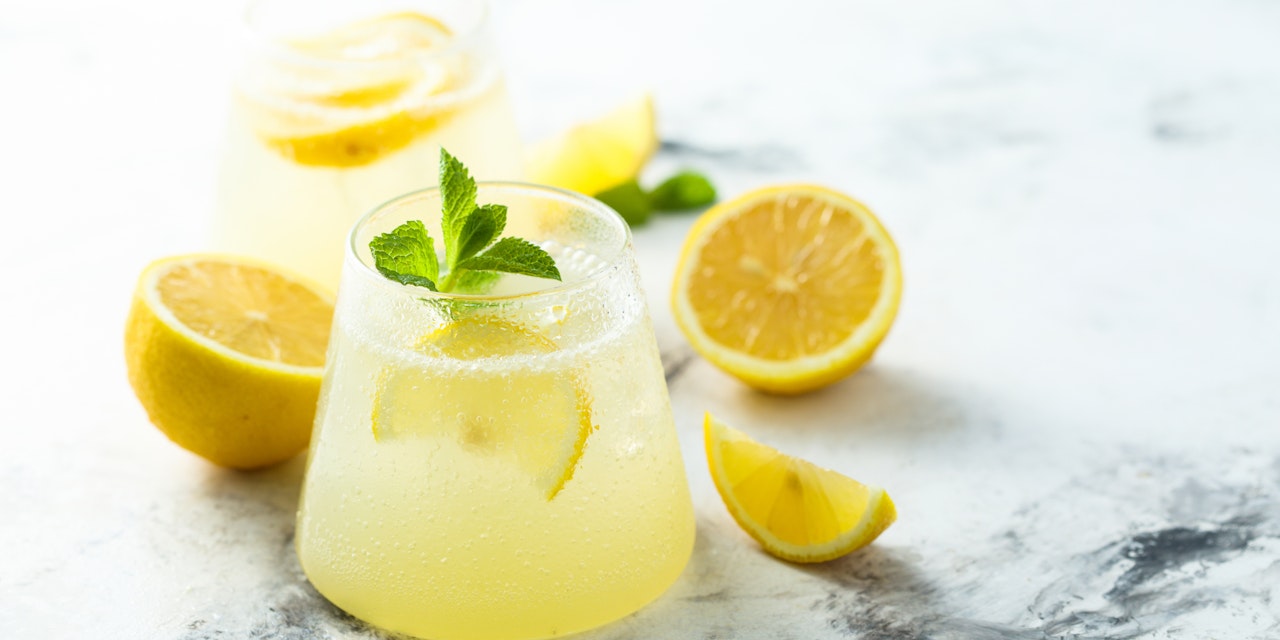DIY Electrolyte Drinks: Recipes for Homemade Hydration
All you need to know about electrolyte drinks, and how to make them at home.
- Published: 6/9/2023
- 3 min. read

- Published: 6/9/2023
- 3 min. read
Did you know that hydration goes beyond H2O? Electrolytes are essential minerals that are vital to many key body functions. Commercial electrolyte drinks offer convenience but oftentimes contain unnecessary sugar or artificial ingredients. Replenish your fluids in a healthier way with refreshing recipes for homemade hydration.
Electrolytes elevate hydration
Electrolytes are minerals that carry an electric change, signaling to our cells and supporting our bodily functions. They include sodium, potassium, chloride, magnesium, calcium, phosphate, and bicarbonates (1).
We need to get electrolytes on a daily basis and get them through certain foods and beverages. It’s essential to keep electrolytes balanced because when too high or too low, they can disrupt normal functions. Some not so fun symptoms of imbalanced electrolytes include fatigue, muscle cramps, dizziness, or irritability.
Electrolytes are lost through sweating, diarrhea, fever, or vomiting. When you sweat, your body brings water to your skin in order to cool off. So if you’re living in a hot climate or have an intense, good workout, it's even more important to replenish water as well as electrolytes.
What is an isotonic drink?
An isotonic drink has similar levels of electrolytes as your body does. It can help replace lost fluids along with essential electrolytes. It typically contains a bit of sugar which helps provide a quick energy boost when needed, such as during a longer endurance workout.
There are many beverages on the market that claim to provide these ingredients. Although convenient, they are not always the healthiest option due to artificial colorings, ingredients, and high amounts of added sugar. Some products even contain larger amounts of sugar comparable to soda! So how can you restore without a store bought drink? Let’s start with some key ingredients.
DIY electrolyte drinks: key hydrating ingredients
Water or coconut water base
When you make your own electrolyte drink, using water as a base is perfectly fine, but you’ll have to be more conscious about adding those electrolytes in. Coconut water on the other hand is about 95% water and also rich in various electrolytes including potassium and magnesium.
If possible, use a fresh coconut, otherwise aim for products that are just made of coconut water. Many commercial drinks have preservatives such as citric acid, sodium benzoate, or added sugar. Keep in mind that coconut water tends to have less sodium than sweat, so if you’re losing a lot of fluids you may need to add something with it like a salty snack.
Salt or salty foods
To cover sodium loss, go for more whole foods with salt such as pickles, olives, shellfish, vegetables, or homemade broth with salt. If you’re making a drink, you can easily add a dash of table salt.
Electrolyte foods or powders
Foods that are rich in electrolytes include bananas, potatoes, beans, leafy greens, and nuts. But if you’re not able to snack, such as during or race, you may want to consider purchasing powders to help out. Just like with supplements, keep in mind that they are best used as just a replacement, in addition to a healthy eating plan.
Hydrating fruits and vegetables
There are plenty of fruits and vegetables that lend a good amount of water as well as natural electrolytes and sugars. Some of the highest hydrators contain as much as 90% water with the top contenders being watermelon, cucumber, tomatoes, oranges, peaches, and berries (2). Check out more here: Nutrition for summer: hydration highlight.
Recipes for homemade hydration
Now that you’re equipped with your key ingredients, time to make your own favorite DIY electrolyte drink for homemade hydration!
Basic homemade hydrator
- 4 cups water
- 1/2 cup lemon juice
- 1/4 teaspoon salt
- Optional: 1 tsp honey or agave
Citrus sports drink
- 1 liter water
- 1 orange, squeezed
- 1/4 teaspoon salt
Minty green tea energy
- 3 cup water
- 2-3 bags of green tea
- 1 fresh lemon, squeezed
- A few sprigs fresh mint,
- 2 tablespoons honey
- 1/4 teaspoon of salt or electrolyte supplement
2 references (hide)
All of the content and media on Lifesum is created and published for information purposes only. It is not intended to be used as a substitute for medical advice or treatment. Users should always consult with a doctor or other health care professional for medical advice. If you have or think you are at risk of developing an eating disorder, do not use the Lifesum app and seek immediate medical help.